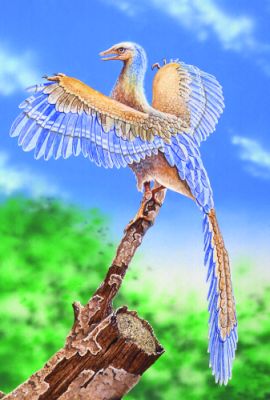Feedback archive → Feedback 2015
Mosaic fossils?

When describing so-called ‘transitional’ fossils, we often call such fossils ‘mosaic fossils’. What do we mean? Ryan B. from the United States writes:
Hi CMI, I have been reading some of your articles about mosaic fossils such as Archaeopteryx, Tiktaalik and the mudskippers and you say that mosaic fossils don’t qualify as transitional fossils. I am having trouble understanding the whole mosaic idea; if a fossil contains both fish and reptile features doesn’t that make them transitional? Same thing with archaeopteryx. I was talking to my brother’s friend who is going to med school and his professor showed him Archaeopteryx as “proof” of bird evolution and proceeded to show me how Archaeopteryx had bird and dino features. Can you explain to me how “Mosaic” features is not the same as transitional features? And also do evolutionists recognize this difference?
CMI’s Shaun Doyle responds:
First, we do not talk of mosaic features, but of mosaic creatures. My article on the mudskipper illustrates this point:
“Mudskippers are unique mosaic creatures, not transitional forms. This means that, while they have some traits fish have, and other traits amphibians have, they are all fully formed traits arranged in a unique combination not found in either fully aquatic fish or amphibians. It’s not the individual traits that matter; it’s the way they are arranged to form a functional creature that matters. If evolution were true, we would expect to see a half-fin-half-leg. Instead we see a functional fin, with modifications determined by function, not evolution.”
In other words, we grant that e.g. mudskippers, Tiktaalik, and Archaeopteryx have features of their supposed ancestors and descendants; this is not the issue. The problem for evolution is that these features can typically be designated ‘ancestral’ or ‘derived’, a ‘transitional’ feature is much rarer than a transitional creature, and even where it might appear to be so, on closer inspection such ‘intermediate features’ are usually readily identifiable one way or another (see e.g. It’s all talk, Tiktaalik can’t walk and ‘Transitional form’ in mammal ear evolution—more cacophony).
Would evolutionists accept this sort of talk? Probably not, if my previous interactions with evolutionists are anything to go by. But why should that matter? Just because they don’t like the way we interpret the fossil evidence doesn’t mean that they’re right. And when evolutionists use terms like ‘mosaic’, ‘transitional’, and ‘intermediate’, we must remember that they don’t use these terms in any strict genealogical sense. Rather, they are understood in the context of cladistics, which never identifies proper lineages. And in this context, ‘mosaic evolution’ is the idea that evolutionary change takes place in some body parts or systems without simultaneous changes in other parts. They infer this from the fact that there are many discontinuities and reversals in individual character state changes as ‘revealed’ by their cladograms (see Mammal-like reptiles: major trait reversals and discontinuities and Bird evolution: discontinuities and reversals). In other words, the cladistics picture is messy and modular, so they assume evolution was messy and modular because they think that cladistics ‘reveals’ how evolution happened. But cladistics doesn’t demonstrate anything of the sort: see Cladistics, evolution and the fossils for more information. You can organize a collection of teaspoons (or other man-made objects) into a cladogram, but clearly this does not prove some sort of evolutionary relationship between the spoons.






Readers’ comments
Comments are automatically closed 14 days after publication.